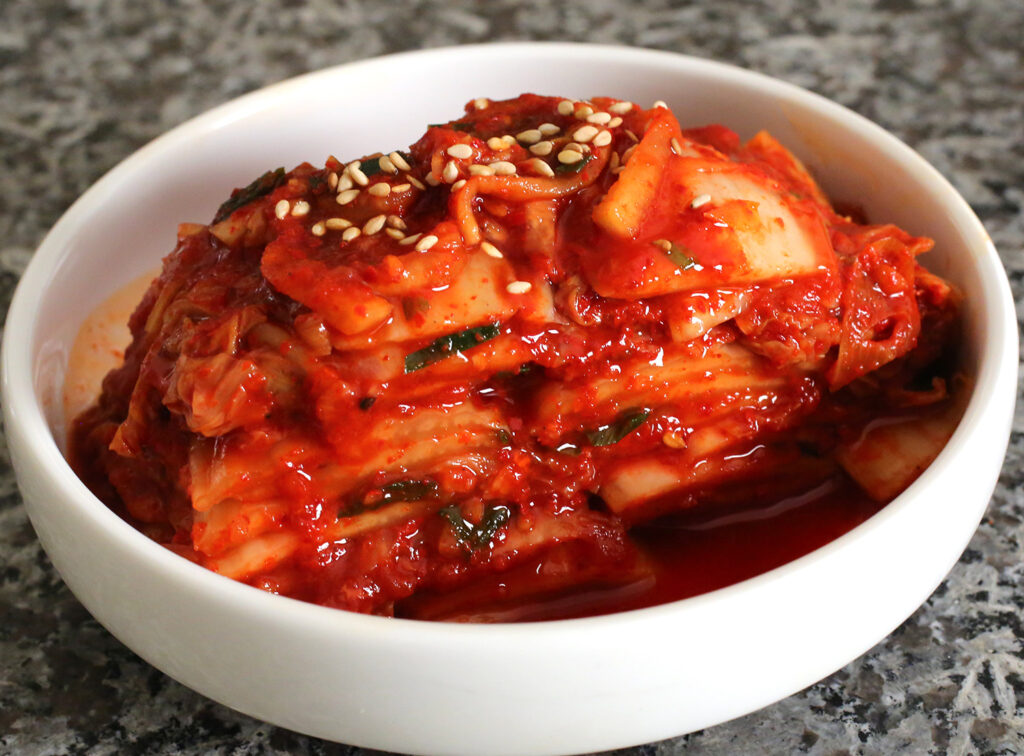If you’re a kimchi lover, you’ll definitely want to try these Korean Kimchi Kimbap rolls! This dish takes the bold, spicy flavor of kimchi and wraps it in a convenient, bite-sized roll that’s both healthy and satisfying. Perfect for a quick meal or snack, these rolls are simple to make at home and are sure to spice up your taste buds. Whether you’re craving something light yet full of flavor or just want to try a new twist on traditional kimbap, these rolls will hit the spot!
The History Behind Kimbap Rolls
Tangy Kimchi Kimbap roll is a delicious twist on the classic Korean dish, Kimbap. Kimbap, which means “seaweed rice rolls,” was first introduced in Korea in the early 1900s. It was inspired by Japanese sushi but adjusted to fit Korean tastes.
Traditionally, Kimbap is made with seasoned rice and a variety of fillings, all wrapped in seaweed. Over time, Koreans began adding their own ingredients, with kimchi becoming a popular choice.
As a result, the addition of kimchi to Kimbap brought a fresh, exciting flavor. The spicy heat from the kimchi blends beautifully with the savory rice and other ingredients inside the roll. That’s why it’s the perfect balance of flavors and textures that makes this dish stand out.
Today, Kimchi Kimbap rolls are loved for their bold taste and crunchy texture. It’s a fun and unique variation of the classic Kimbap.
Tips for Making the Best Kimchi Rolls

1. Use Fresh Kimchi
Use high-quality kimchi, preferably homemade, to avoid MSG or refined sugar. You can choose either fresh or fermented kimchi. Fresh kimchi gives your kimbap a crisp texture and a bright, tangy flavor, while well-fermented kimchi adds a richer, deeper taste. Both options will make your kimbap taste amazing, so pick based on whether you prefer a fresh, zesty kick or a stronger, fermented flavor.
2. Drain Kimchi Well
Before adding kimchi to your kimbap, make sure to drain it well. Kimchi can have extra liquid that makes the rice soggy. If it’s too wet, the rice will become mushy and harder to roll. To prevent this, gently squeeze out the extra liquid with your hands. This will keep the rice firm and easier to handle, helping your kimbap roll up neatly and hold its shape.
3. Cooking the Rice
Cook the rice with a little less water than usual to keep it from getting too soft or soggy. Too much moisture can make the rice mushy and difficult to roll, which affects the texture of the kimbap. Also, a firmer, stickier rice will help your kimchi kimbap rolls stay neat and hold their shape.
4. Roll Tightly but Gently
When rolling your kimbap, apply gentle pressure to keep the roll tight, but be careful not to squeeze too hard. Applying too much pressure can crush the ingredients and make the roll lose its shape.
Therefore, a firm yet gentle touch ensures that the kimchi kimbap roll holds together well, with each ingredient neatly in place. This balance helps maintain the roll’s shape and keeps all the flavors intact, making it easier to slice and serve.
4. Serve Immediately for Freshness
Serve your Korean kimchi kimbap rolls right after slicing. If you’re taking them on a trip, wrap the sliced rolls in aluminum foil or put them in a container for easy transport. When the weather isn’t too hot, they’ll stay fresh for 4-5 hours.
On hot summer days, try to eat them within a few hours. Also, avoid storing kimbap in the fridge because the rice can become hard when it’s cold.
Delicious Kimchi Kimbap Roll Recipe
Makes 4 Rolls

Ingredients:
- 1 cup kimchi, chopped
- 2 cups cooked rice, slightly cooled (on the dry side)
- 1 tablespoon sesame oil
- 4 sheets nori (seaweed)
- 1 small cucumber, julienned
- 1 small carrot, julienned
- 2 eggs, beaten
- 1 tablespoon sesame seeds (optional)
Instructions:
Start by mixing the cooked rice with sesame oil in a bowl. This helps the rice stick together and adds extra flavor, making it easier to roll your kimchi kimbap and keep it in shape.
Then, chop the kimchi into small pieces and Julienne the cucumber and carrot. For the eggs, cook them in a non-stick skillet over medium heat to make a thin omelet. Once cooked, let it cool for a bit and then slice it into thin strips.
Place a sheet of nori on a bamboo sushi mat with the shiny side facing down. Then, spread a thin layer of rice evenly over the nori, leaving a small border at the top.
Now, add a line of chopped kimchi, cucumber, carrot, and egg strips across the center of the rice. Start with the kimchi, then layer the cucumber and carrot, and finish with the egg strips. This order ensures a perfect mix of flavors in every bite of your kimchi kimbap rolls.
Now, use the bamboo mat to gently roll the kimbap from the bottom up, pressing lightly to keep it tight. Make sure everything stays in place as you roll. When fully rolled, wrap the bamboo mat around it and press gently to secure the roll.
Finally, slice the rolled kimchi kimbap into bite-sized pieces with a sharp knife. Sprinkle sesame seeds and a little extra sesame oil on top for added crunch and flavor.
Make Delicious Rolls at Home
If you have kimchi in the fridge and crave something tangy, making Korean kimchi kimbap rolls at home is a fun and tasty way to enjoy a simple meal. With the perfect balance of spicy kimchi, fresh veggies, and savory rice, these rolls make for a quick meal or snack. Whether you’re sharing with friends or enjoying them by yourself, kimchi kimbap is a delicious treat.
You can easily customize the ingredients to suit your tastes, so get creative with your fillings! And remember, fresh kimchi and a little sesame oil can make all the difference. Enjoy rolling and eating your homemade kimchi kimbap rolls!
If you’re interested in trying more simple and healthy recipes with kimchi, here are some delicious options to try:














